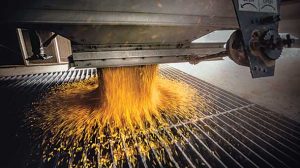Propane-powered grain drying systems increase efficiencies
The Propane Education & Research Council (PERC) partnered with three agricultural companies – Grain Systems Inc. (GSI), Mathews Co. and Sukup Manufacturing Co. – to develop new fuel-efficient grain drying technologies.
PERC invested in the research and development of GSI’s heat reclamation system, Mathews’ redesigned Legacy Series grain dryers and Sukup’s new burner design. PERC provided industry expertise and financial support for the research, development and testing processes for these new technologies.
“PERC prioritizes the development of new technology that advances energy efficiency,” says Cinch Munson, director of agriculture business development at PERC. “By working with leading agricultural manufacturers to advance efficient grain drying technologies, we can help ensure that farmers operate as cost-effectively as possible.”
Energy savings were the main motivation behind PERC and GSI’s development of a new heat reclamation system for tower dryers, according to PERC. The reclaimer captures air from the lower part of the drying portion, above the cooling section. It separates the hot, dry air from the wet air, and it carries very little chaff and other debris back into the dryer. As a result, the system saves up to 30 percent of propane at 32 degrees Fahrenheit during the drying season.
PERC worked with Mathews Co. to redesign the fan, burner and control system in the company’s profile-style Legacy Series product line. According to PERC, the new dryer offers many of the same technological advances and operational efficiencies associated with a tower dryer, but by combining tower dryer elements with a profile-style dryer, the dryer is more efficient and has lower operating costs.
Sukup and PERC partnered to redesign a grain-drying burner. The new Octagon Burner uses less propane while still achieving the temperature rise needed to dry grain. This results in increased fuel savings and lower carbon dioxide emissions, according to PERC. Additionally, the burner’s aluminum manifold increases the durability and longevity of the burner.
“These new technologies result in a highly efficient, cost-effective grain drying process,” Munson says. “Drying your own grain is more viable than ever.”

















